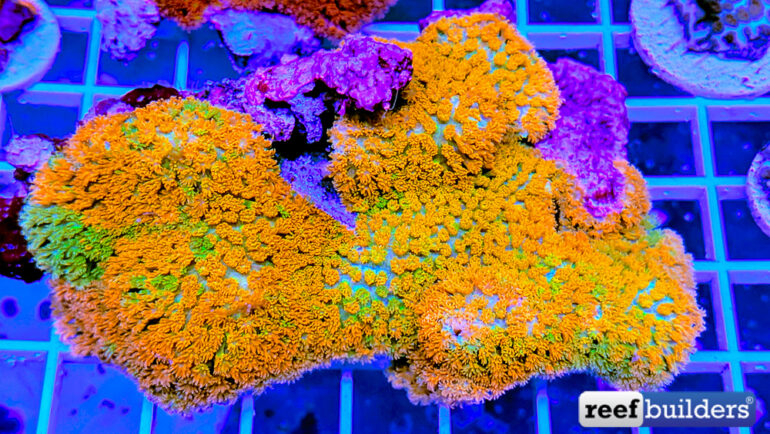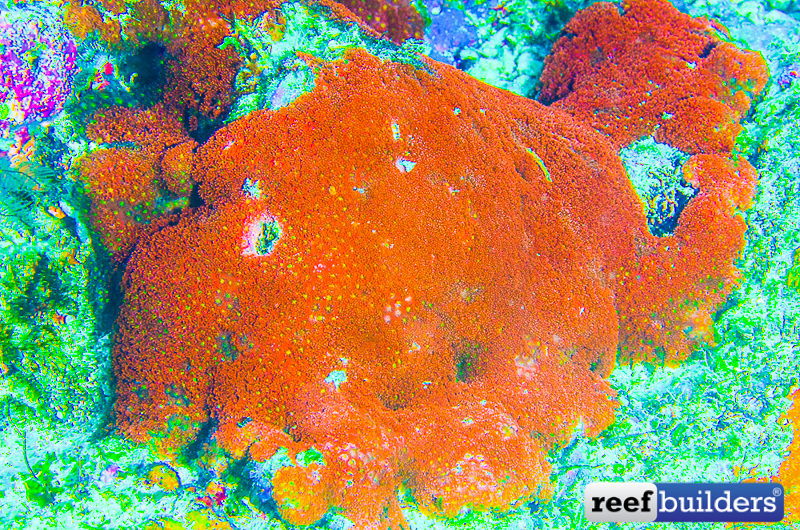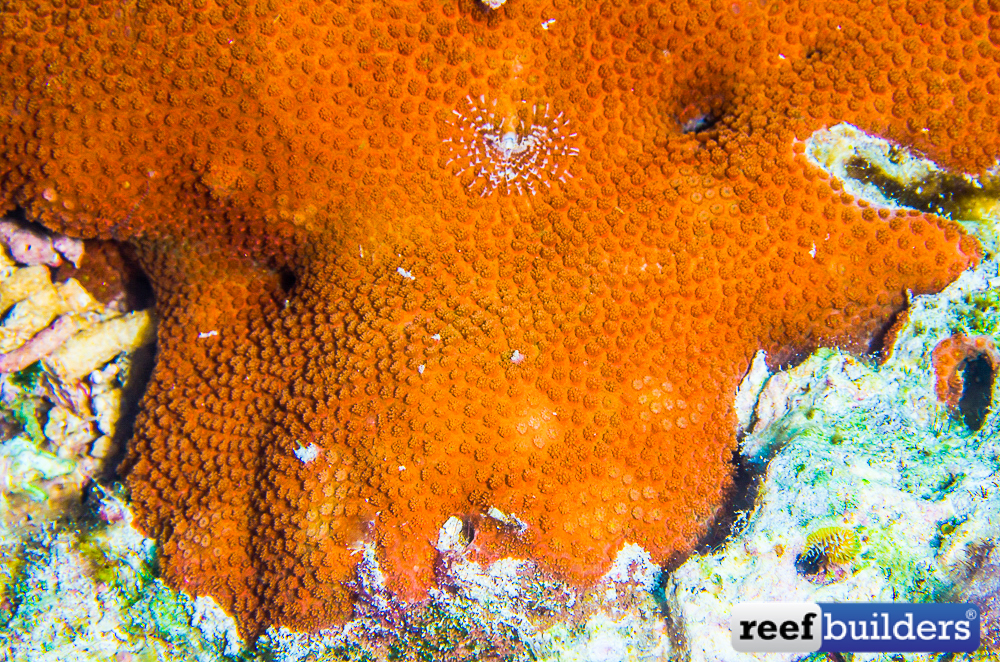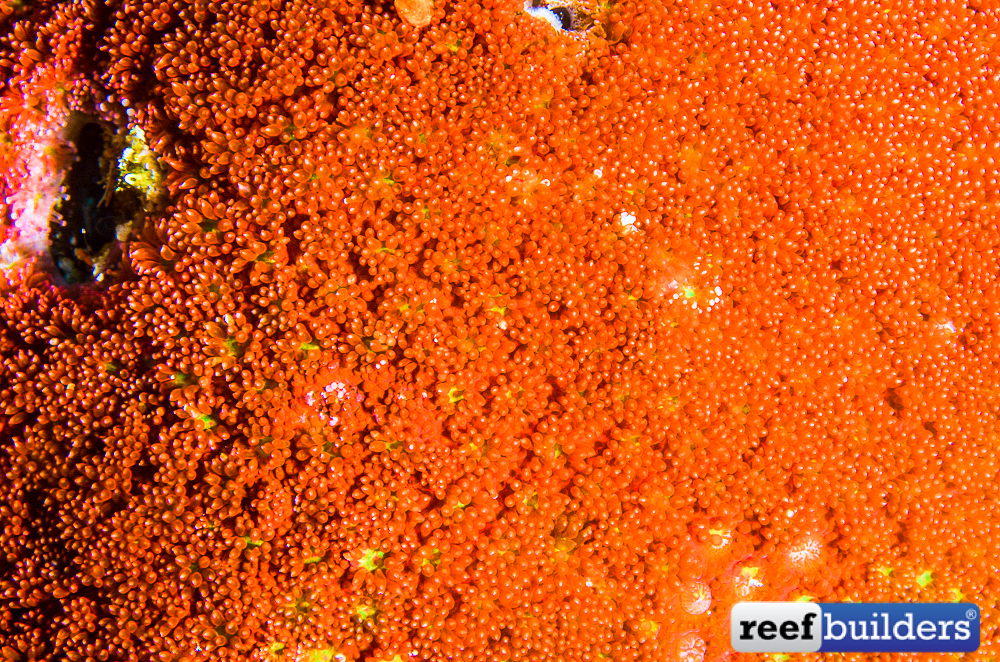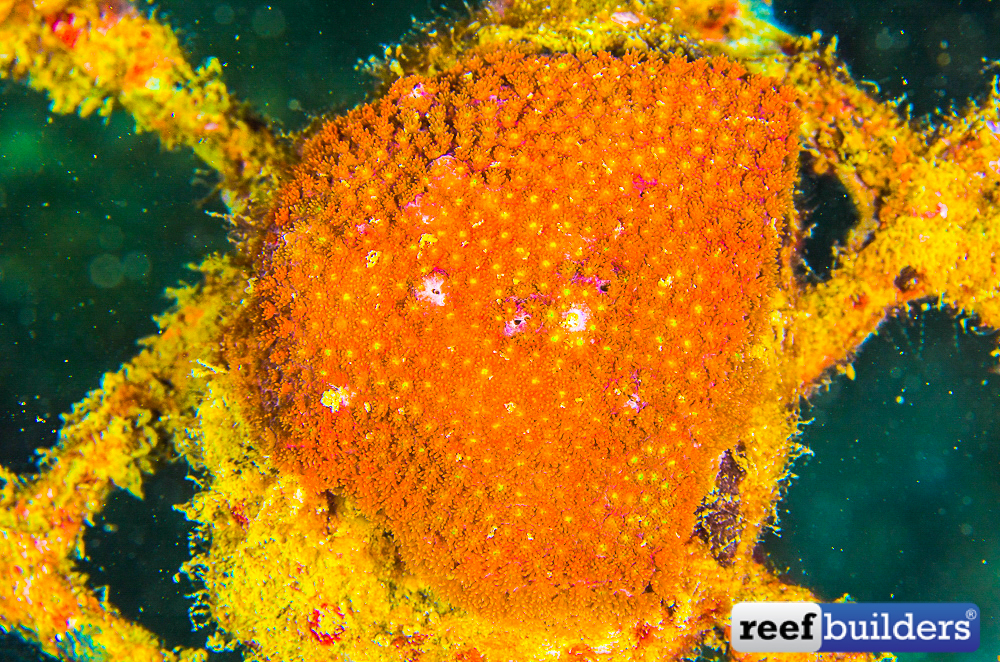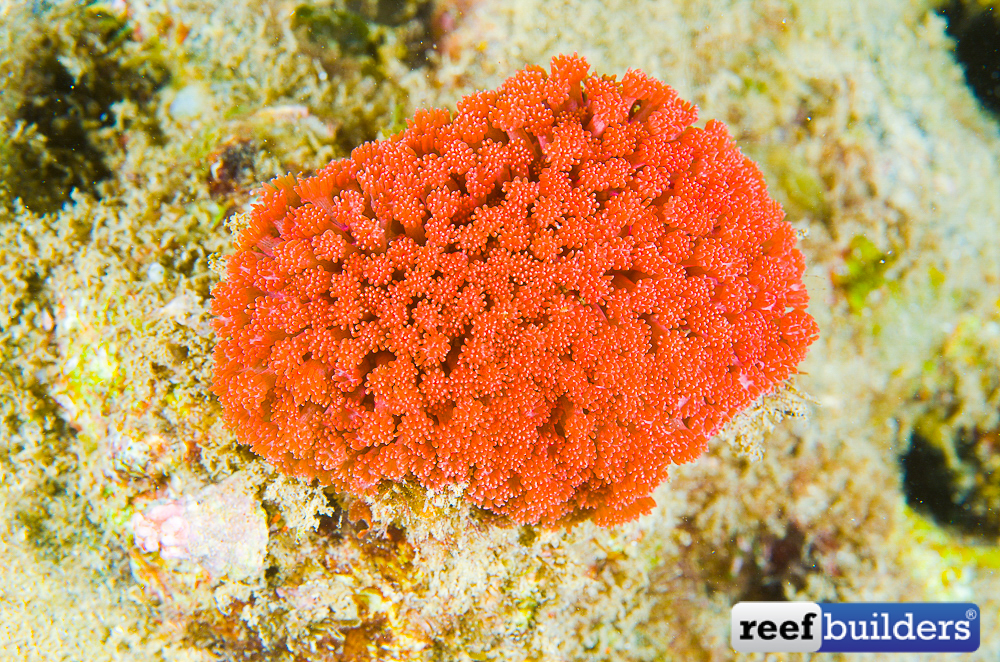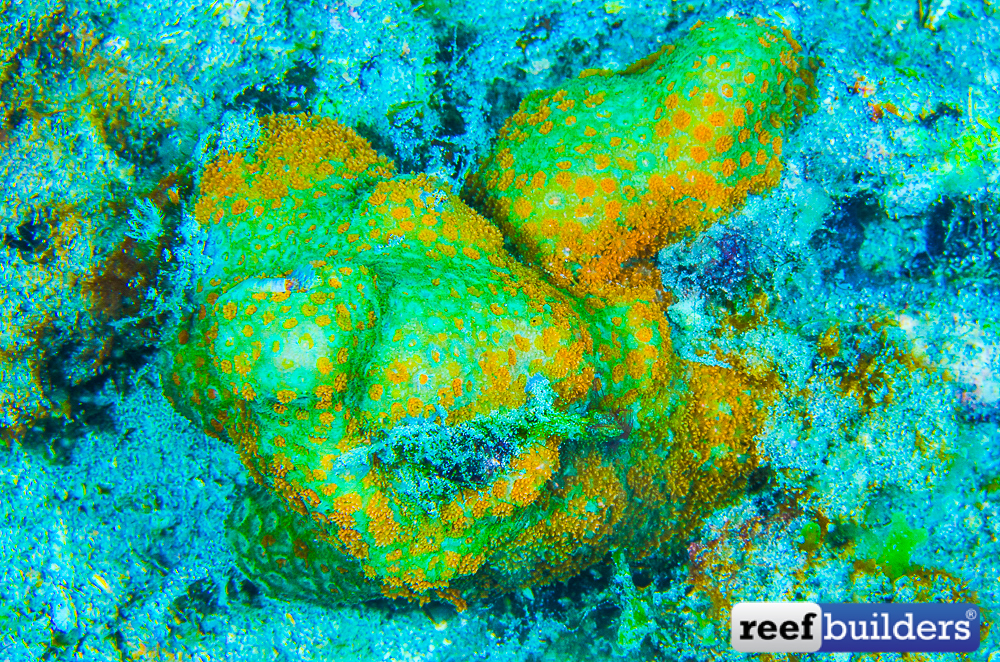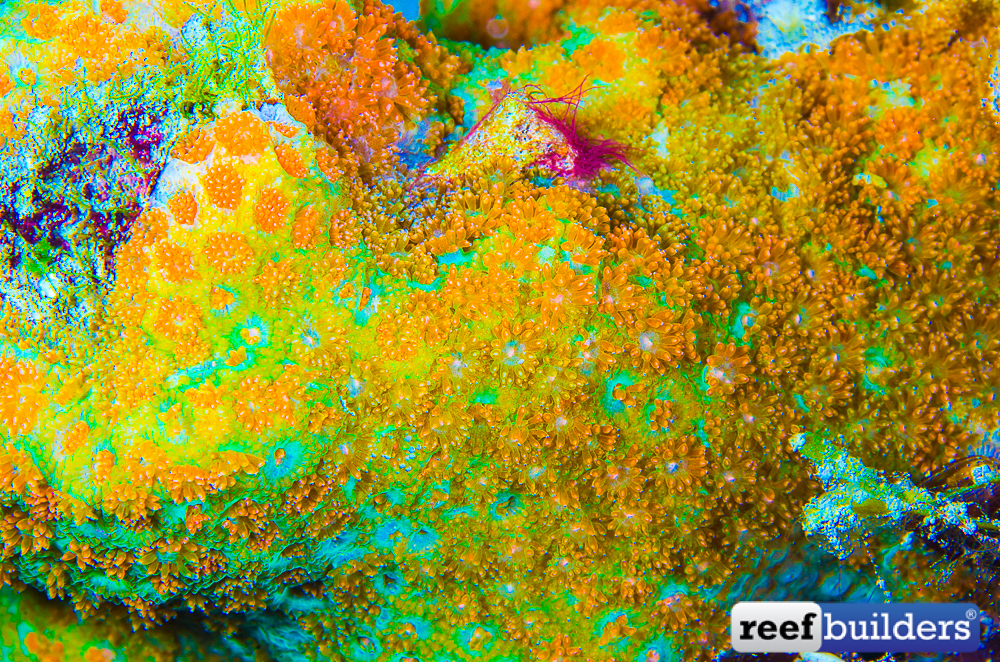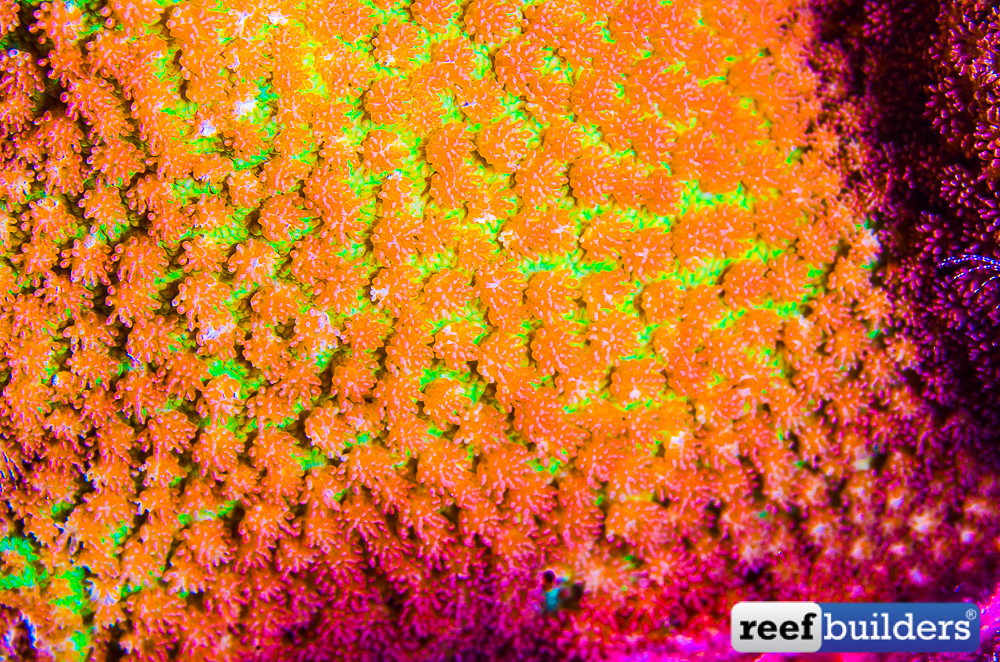This awful scientific name probably doesn’t ring a bell to you but Bernardpora stutchburyi is actually a very common coral. It’s cultured all over the world, and misidentified under so many other names. The most used common name is short polyped flowerpot coral or micro Goniopora.
We often have seen it labelled as a Cyphastrea, Astreopora or a Madracis, and we can see why, as small pieces can be difficult to tell apart. Until recently, it was a small polyped Goniopora, and it is still related to Poritidae which they share common ancestor. But nevertheless, it recently got moved to its own genus for very obvious reasons, as it really stands out from the other classic Goniopora flowerpot corals.
Bernardpora stutchburyi is a very good aquarium candidate since it usually grows very well under classic reef tank conditions. The reason why it’s a very good aquarium coral, is that it’s a very adaptive species. We can find it, in less than 10 m (30 feet) of water with a bit of flow over it, as well as down to 30 m (90 feet), under a ledge, receiving only indirect light. When it comes from shallow water polyps are longer, and stay tight on the skeleton. While when it comes from deeper water with less light, polyps are shorter and spaced, giving it a very weird distinctive appearance.
The classic coloration is usually full red or red polyps with yellow mouth and it has been readily maricultured in Indonesia with great results. It is also mass produced in many land base farms in the US and around the world because it adapts very well to captivity, does very well under most kind of lightings, just be careful not to burn them with lot of UV.
It accepts easily most coral food, as long as flow is not too high, and for a LPS it grows pretty fast if provided copious amounts of food. Really the perfect little aquarium coral, strong, colorful and adaptive, even for a beginner.
But once in a while we come across some very particular specimen, with gold, or mixture of green, orange and red, like these specimens we found in eastern Indonesia:
We also found this beautiful grafted specimen also coming from Eastern Indonesia that Bali Aquarium, has been holding for over a year now.
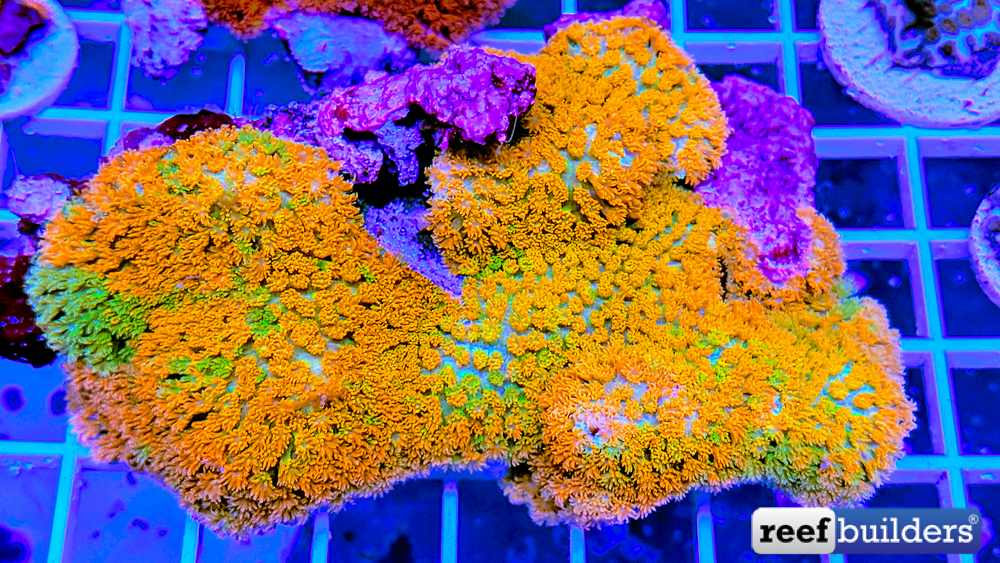
For the time being this species is rarely imported from Australia, where it’s found on the east and west cost. So hopefully, now that Australian collector are fully operating, we can expect to see some nice specimen coming from down under sometime soon.


